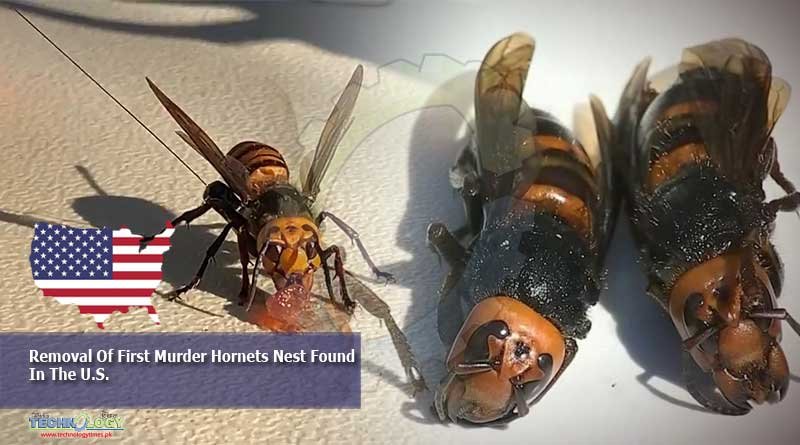Agricultural workers covered head to toe in protective clothing in the United States have destroyed the first nest of so-called murder hornets.

Agricultural workers covered head to toe in protective clothing in the United States have destroyed the first nest of so-called murder hornets discovered in the country.
The Agriculture Department in the state of Washington spent weeks searching, trapping and using dental floss to tie tracking devices to Asian giant hornets.
The hornets can deliver painful stings to humans and spit venom but their biggest threat is to honeybees that farmers in the region depend on to pollinate crops.
The nest found in the city of Blaine near the Canadian border is about the size of a basketball and contained an estimated 100 to 200 hornets, according to scientists who announced the find on Friday (local time).
Crews wearing thick protective suits vacuumed the invasive insects from the cavity of a tree into large canisters on Saturday.
The suits prevent the hornets’ 6-millimeter stingers from hurting workers, who also wore face shields to protect their eyes from painful venom spat by the trapped hornets.
The tree will be cut down to extract newborn hornets and learn if any queens have left the hive already, scientists said.
Officials suspect more nests may be in the area and will keep searching.
The world’s largest hornets kill at most a few dozen people a year in Asia.
Some experts say it is probably far less.
Hornets, wasps and bees typically found in the United States kill an average of 62 people a year, the Centers for Disease Control and Prevention says.
The real threat from Asian giant hornets — which are 5 centimetres long — is their devastating attacks on honeybees, which are already under siege from problems like mites, diseases, pesticides and loss of food.
The invasive insect is normally found in China, Japan, Thailand, South Korea, Vietnam and other Asian countries.
Washington state and the Canadian province of British Columbia are the only places the hornets have been found in North America.
Originally published by abc news
